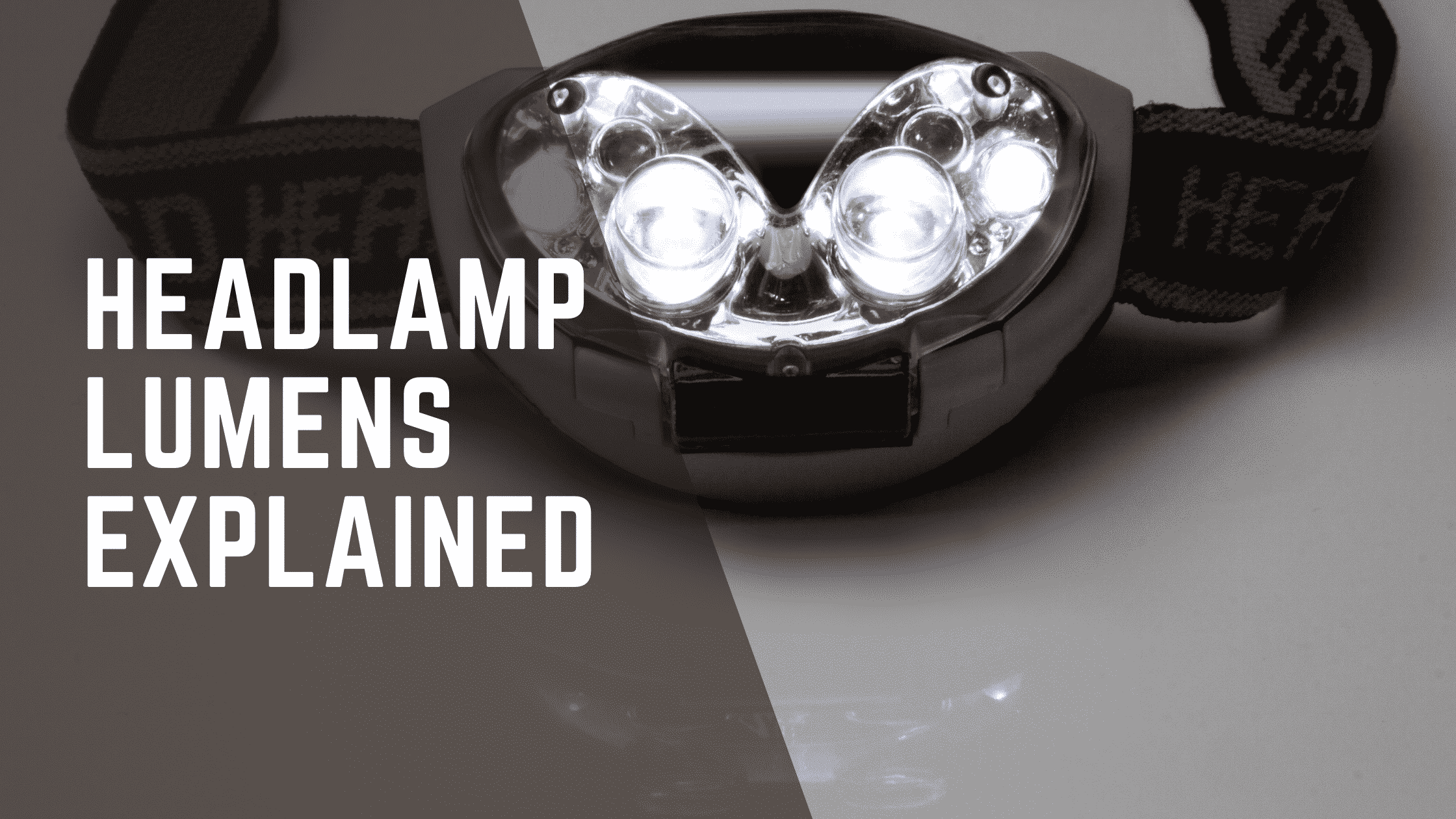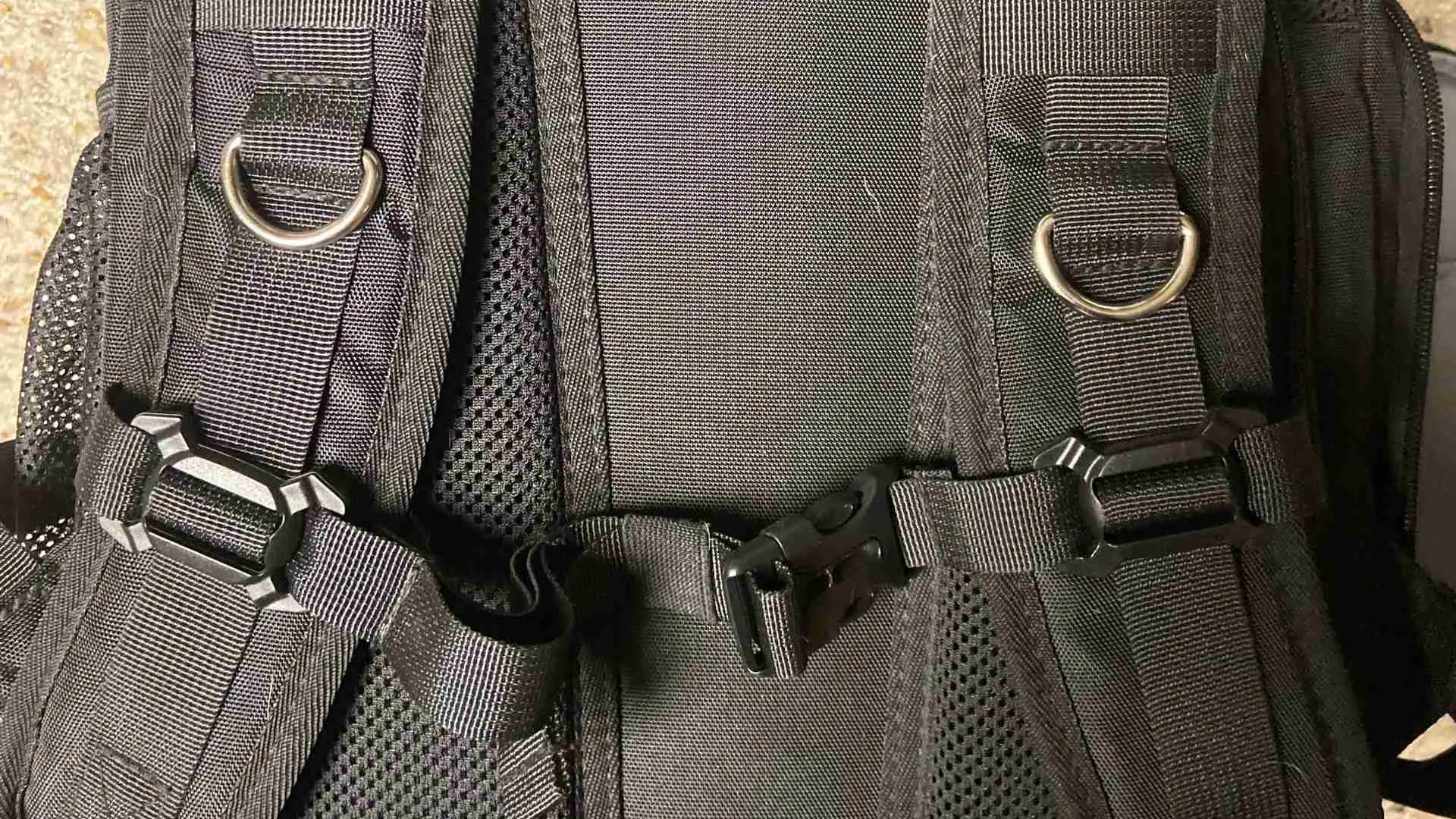When it comes to picking out headlamps, it can be a challenge picking through 1000s of different options. They all look the same and serve a similar function (providing light), but some of them do a better job than others. So how do you choose the right headlamp? Most people start off by comparing the headlamps lumen level, but headlamp lumen ratings aren’t what they seem. How many lumens should a headlamp have?
Most people should aim for a max lumen rating in the 250-350 range. A 350 lumen headlamp will provide plenty of light on its max setting with a long battery life. You don’t need more the 100-150 lumens to go on a nighttime hike, but higher lumen headlamps will be better for spotlighting objects at a distance.
Understand that you will rarely use a headlamp on the maximum brightness setting since that will drain the battery fast. Headlamp lumen ratings play a small role, but you rarely get the full brightness out of a headlamp. Factors like battery charge level, brightness settings, beam width, etc., all play an important role in determining headlamp brightness.
Be careful when purchasing a headlamp! Budget headlamp manufacturers lie about lumen ratings to exaggerate headlamp brightness. If you’re seeing a $20-$30 headlamp with more than 350 lumens, they’re probably inflating the rating. Go with a trusted manufacturer to get a realistic lumen rating.
In the rest of this post I’ll explain how many lumens a headlamp should have and go over all the factors that affect headlamp brightness. You may be surprised that lumen ratings don’t make much of a difference when it comes to headlamp brightness.
Table Of Contents
Headlamp Brightness: How Many Lumens Should A Headlamp Have?
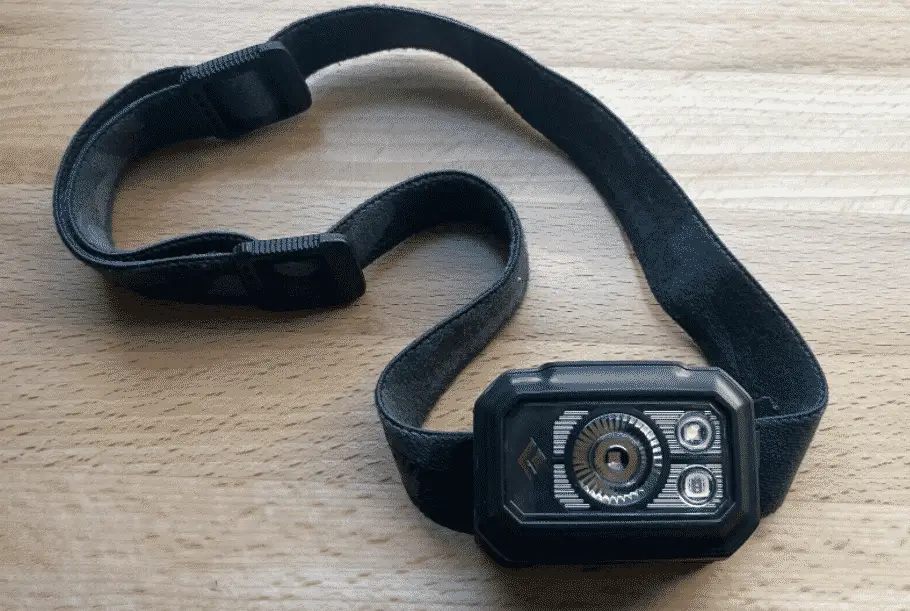
The vast majority of headlamps fall in the 250-350 lumen range. There are some outliers that can achieve 1000+ lumens, but those headlamps will be bulky and expensive. So why are there so many cheap headlamps that claim ridiculous lumen ratings in the 10,000+ lumen range?
Most headlamps that claim more than 1000 lumens are being deceptive about their real lumen values. You would have to pay well over $100 (probably closer to $200-300) to get a real 1000+ lumen headlamp. Any company that claims to sell a 1000+ lumen headlamp for $30-$50 is making fraudulent claims about their product.
Real headlamp values will almost always fall in the 250-350 lumen range unless you’re spending more than $100. There are companies that sell real 450-750 lumen headlamps for less than $100, but you probably won’t notice much of a difference between a 350 and 750 lumen headlamp. The Petzl Tactikka Core Headlamp (450 Lumens), Fenix HM50R (700 Lumens), Biolamp Headlamp 750 (750 Lumens) are perfect examples.
Are High Lumen Headlamps Better? How Bright Is A Good Headlamp?

It might seem like higher a higher lumen rating would always be better, but that’s not the case. There’s a tradeoff between increased lumens and battery life. When you increase the lumen rating it will almost always decrease the overall battery life or it will have a bulky battery pack.
Plus you rarely run a headlamp at max brightness, brightness drops as the battery levels drain, and you also have to factor in beam distance. I have multiple headlamps with various lumen ratings and there’s not much of a difference between cheap and expensive headlamps.
My cheap Black Diamond Astro 250 Lumen headlamp performs similarly to my expensive headlamps that have twice the lumen value. Doubling the lumen value will make a slight difference, but you also have to factor in perceived brightness.
It would seem logical that going from 400 lumens to 200 lumens would create a 50% drop in brightness, but that’s not how it works. When brightness (measured in lumens) drops by 50% there’s only a 30$ drop in brightness. Your pupils respond to the change of light and expand to make up for the change in brightness.
You also need to remember that most people run their headlamps on lower brightness modes and high lumen headlamps dim faster than lower lumen headlamps. A 400 lumen headlamp on max brightness dims to 200 lumens in 15-20 minutes, but a typical 250 lumen headlamp may take an hour to reach 200 lumens.
Once both headlamps reach the same lumen level the batteries drain at a similar rate. So you’re paying 2-3 times the price for 15 minutes of being able to have a longer maximum distance. Then you can factor in beam width and it makes even less of a difference.
Ignore Exaggerated Headlamp Lumen Ratings!
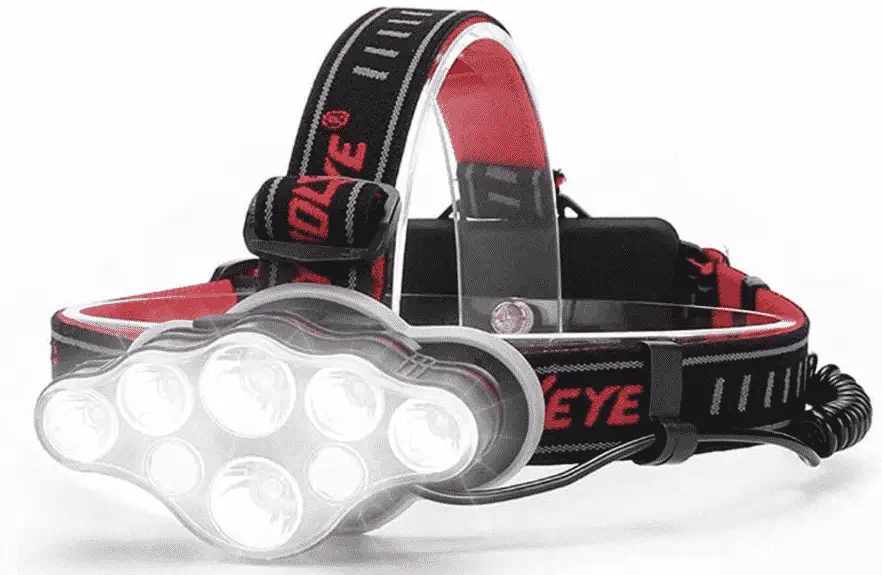
Head over to Amazon and check out the headlamps for a minute. The entire first page of listings are filled with companies that I’ve never heard of. Some of the lumen ratings seem reasonable (250-500 lumens), but you also have crazy 1000+ lumen headlamps.
Here’s an example of one of the best selling headlamps on Amazon. The Victoper Rechargeable Headlamp (pictured above) claims to have 18,000 lumens with a 10 hour run time. It has a bunch of LED bulbs, but there’s absolutely no way those ratings can be real at that price!
Here’s why that’s so ridiculous! I went over to look at Home Depot to find the most expensive LED Bulb on their website. It’s a massive $250 LED Bulb designed for commercial floodlights and it only has 11,200 lumens.
Do you really think they can jam 18,000 lumens in a tiny headlamp for 10% of the price? They completely made up the lumen rating to deceive customers and sell more headlamps. With such a massive bulb design it might fall in the 500-1000 lumen range (I doubt it), but you wouldn’t get more than 20 minutes of battery life.
Factors That Affect Headlamp Brightness

When it comes to brightness you can’t just think about the lumen rating. There are multiple factors that will change the overall brightness of your headlamp. So what factors do you need to consider when choosing a headlamp?
- Lumens: Lumens is the total amount of light coming out of your headlamp. More lumens usually equals a brighter headlamp and further beam distance, but product specs can be deceptive. Aim for a lumen rating in the 250-350 range for most situations. Higher lumen ratings are good for spotlighting tasks, but you rarely run a headlamp on max brightness and brightness drops alongside the battery level.
- Run Time: (aka burn time) Run time aka burn time is the amount of time your batteries will last at max brightness. High lumen headlamps almost always have a much shorter run time. You usually trade a higher lumen value for decreased battery life, but multiple brightness settings can alleviate the burden. The brightness will drop fast as the battery drains. You might get 350 lumens at 100% charge, but you can expect more than a 50% lumen drop within 15 minutes of using the headlamp on max brightness.
- Brightness Modes: Headlamps with multiple brightness modes will allow you to significantly increase the overall battery life. Every headlamp has at least 3 brightness modes, but there are models with low lumen, red/green/blue, and extreme battery life modes(5-10 lumens). Being able to spotlight at max brightness for 30 seconds and then drop down to 50 lumens will significantly increase run time (battery life).
- Beam Distance: Every headlamp has a different beam range that affects the perceived distance of the beam. Higher lumen ratings usually result in a farther/wider beam distance, but low lumen headlamps with narrow beams (you lose beam width) can achieve the same beam distance as high lumen headlamps with wider beams. You may also be able to adjust between spotlight and floodlight modes to adjust the distance/width of the beam.
- Battery Type: You have to choose between rechargeable and non-rechargeable batteries. Rechargeable headlamps will typically be lighter and more compact, but you trade that for a shorter battery life. Non-Rechargeable headlamps tend to be slightly heavier, but you can carry extra batteries in your pack. You’re trading extra battery weight for the ability to quickly swap out batteries instead of needing to carry a portable power bank. Headlamps drop brightness fast so being able to hot swap batteries is crucial when you need to spotlight deer/fish, track wild game, find something, or any other situation where maximum brightness is important.
This post is about headlamp brightness and explaining lumens so lets go over how each of those factors affects headlamp brightness. You may be surprised that lumen ratings don’t make much of a difference in 99% of situations. A 400+ lumen headlamp may be nice to have, but you may be surprised that most people don’t need to spend the extra money on a high lumen headlamp.
Does Headlamp Lumens Matter?

Lumens is the overall brightness of a headlamp so it does play a small role in the performance of your headlamp. In a perfect world, everybody would just purchase whichever headlamp has the most lumens, but it’s not that simple.
You also need to factor in how you’ll be using the headlamp. The 250-350 lumen headlamp range is the sweet spots. It’s bright enough to spotlight objects at a distance for a few minutes, you can navigate through the dark (medium setting), there’s a longer battery life, and it won’t cast as much.
If you’re always using a headlamp on medium or low brightness modes it doesn’t make sense to buy a high lumen headlamp. The average person uses a headlamp on medium/low 99% of the time to extend the battery life. So you’re missing out on 30% difference in perceived brightness for 10-15 minutes(not a big deal).
The only time it makes sense to go with 450+ lumen headlamps is if you’re using it to spotlight something at a distance. You turn the brightness up for 30 seconds and drop back down to a low lower setting to conserve the battery life.
If you run it on high for 10-15 minutes the batteries will drain and you won’t notice much of a difference in brightness. The wider beam may actually make the higher lumen headlamp appear dimmer than a cheaper low lumen headlamp.
How are Headlamp Lumen Ratings Tested?
In the past lumens were tested using the “Moonlight Protocol”. They would turn the headlamp on max power and see how long it took the headlamp to equal the brightness level of a full moon at 6ft. Obviously, that’s useless for the average hiker since your headlamp needs to be brighter than the moon.
Thankfully, manufacturers decided to come up with a standardized testing protocol to get a better idea of overall brightness. Cheap no-name headlamp manufacturers completely ignore these tests, which leads to outrageous lumen values and ridiculous battery life’s. So go with a trusted brand if you want real lumen, beam distance, and battery life measurements.
They started measuring total lumens, beam distance, durability and the total time to get down to 10% battery life. Headlamps that used to be rated at 60 hours had to drop their ratings down to 4-5 hours of useable battery life. That makes comparing products much easier since you get a better idea of how the product will actually work.
Check The Max Beam Distance: Higher Lumen Ratings Don’t Always Give More Light!

When I first started looking at headlamps(I was getting into astrophotography) I thought that higher lumens always meant a brighter flashlight. I went out, bought the brightest light I could find with decent run time.
After a little bit of research, you quickly realize there’s no perfect headlamp out there. Two headlamps both rated at 450 lumens will have completely different beams. It’s entirely dependent on the design of the flashlight.
Beam width, brightness settings, and average run time all play an important role when it comes to headlamp brightness. You can jam 450 lumens into a tight beam and you’ll have a bright narrow spotlight, but you won’t have any peripheral light coming out the sides.
Or there could be a wide floodlight style beam that projects out the sides, but it won’t reach as far of a distance. That’s why you should always compare the maximum beam distance with the lumen rating. If you need a spotlight look for increased max distance and for hiking at night aim for a wider field of view with a shorter beam distance.
High Headlamp Lumen Ratings Equals Shorter Battery Life
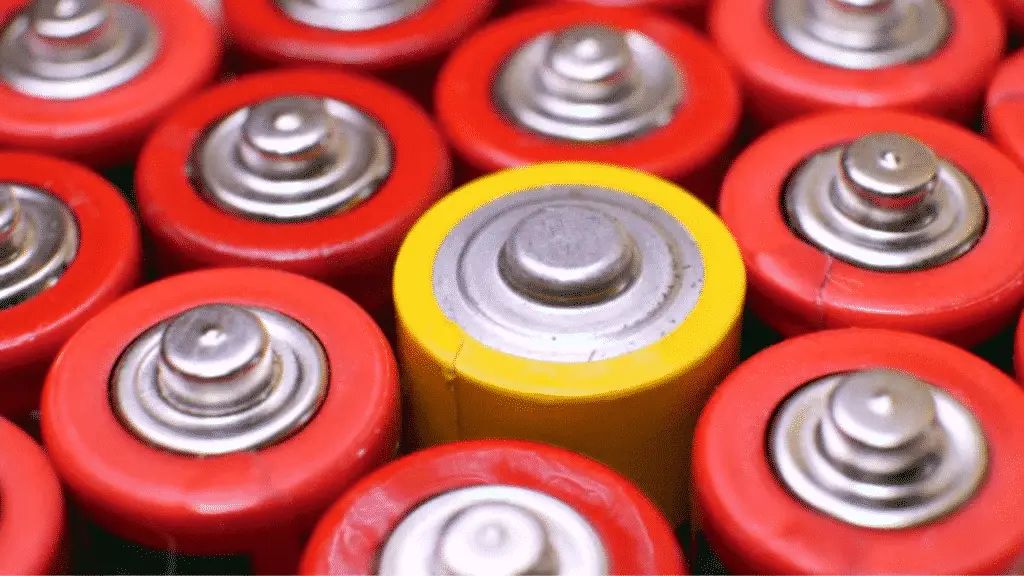
With current technology, you can’t get a 1000+ lumen light with decent battery life. Most 1000+ lumen headlamps have a 2-hour battery life at max brightness. So you have to accept a compromise between total light output and battery life.
There are high lumen headlamps like the LEDLENSER H19R 3500 Lumens (3.5 hour run time) and LEDLENSER H15R 2500 Lumens (5 hour run time). The downside is they’re ridiculously expensive, heavy, and have a large external battery pack. You’re trading a higher lumen rating for higher price tag and bulky design.
When a headlamp says it can pump out 1000+ lumens of light with a runtime of 100 hours alarms should be going off in your head. Realistically you might get 200 hours out of the lowest brightness setting (5 lumens), 20 hours on medium (30-50 lumens) and 4 hours on high (above 500 lumens). That’s nowhere near the advertised ratings!
To further complicate matters the total brightness level will significantly drop as the battery drains. If you’re pumping out 1000 lumens of light you can expect a 50% drop in the first 15 minutes. After 1hr you’re probably down to 200 total lumens and it quickly drops after that. On lower brightness settings you’ll still see a drop off, but it’s gonna be over a larger time frame.
